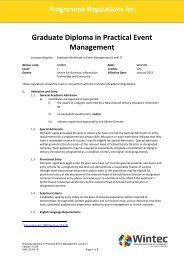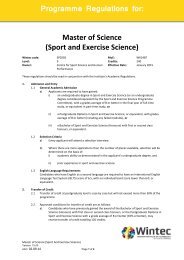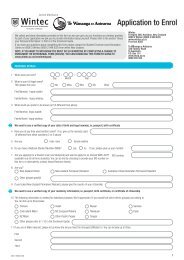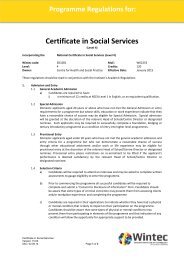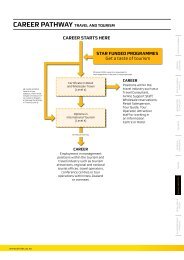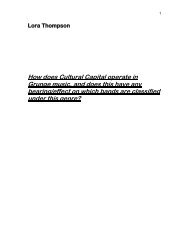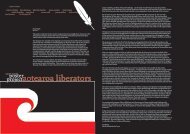Nursing Handover Research Project - Wintec Research Archive
Nursing Handover Research Project - Wintec Research Archive
Nursing Handover Research Project - Wintec Research Archive
Create successful ePaper yourself
Turn your PDF publications into a flip-book with our unique Google optimized e-Paper software.
handover is a form panoptic surveillance that may ultimately be trying to incite patient<br />
compliance (Parker & Wiltshire).<br />
The patient is also absent when labelled through the use of the medical diagnosis or room<br />
number to name them (Parker, 2004; Radka, 2003). Derogatory labelling is also used calling<br />
patients and/or family ‘needy or demanding’ which can affect the incoming nurses’ opinion<br />
of the patient (Strople & Ottani, 2006). It is interesting that less patient contact and nursing<br />
time is spent with patients labelled as ‘difficult’ (Strople & Ottani).<br />
“The patient looks, but at the same time, simultaneously as part of the same linguistic<br />
gesture, is looked at” (Parker & Wiltshire, 2004, p.151).<br />
The text talks of the use of subjective language to describe aspects of the patient and patient<br />
care; words such as OK, good and fine, are used (Davis & Priestly, 2006: Fenton, 2006).<br />
Parker and Wiltshire (2004) describe this as the ‘nursing look’ or ‘connaissance’ as an<br />
informal less medical use of language. Personalising the language establishes the<br />
relationship is between the nurse and the patient (Parker & Wiltshire). In a way it could be<br />
trying to establish a relationship with the patient when they are absent.<br />
Group identity<br />
The construction of the group is through the sharing of sensitive and emotional narratives that<br />
bond the group together (Evans et al., 2008). The group develops a social awareness that<br />
‘gels’ the group, creating an outlet for emotional release (Meibner et al., 2007). The text<br />
depicts a group formation at handover and this develops the nurse as part of the team and<br />
ward (Evans et al., 2008). <strong>Handover</strong> is constructed as having significant social and emotional<br />
importance to nurses (Meibner et al., 2007; Evans et al.). It offers the opportunity for support<br />
and guidance (Evans et al.), and has a positive debriefing quality that is important to nurses<br />
(ACSQH, 2009; Parker & Wiltshire, 2004).<br />
When looking to change process such as handover, culture is a key feature (Johnson &<br />
Barach, 2009). The literature discusses culture in a positive light in relation to nursing<br />
handover (Arora & Johnson, 2009). There are many types of culture within the handover<br />
process these being organisational, professional/nursing and unit/ward culture (Rowe, 2001).<br />
Each group culture cannot be ignored and each unit/area has its own culture. The group<br />
23



